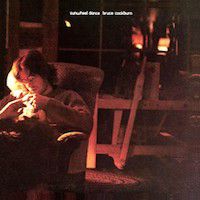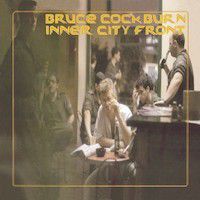 Bruce Cockburn’s third album is an undeniably joyous affair. From the Renaissance-inspired “My Lady and My Lord” to the giddy singalong “For the Birds,” Sunwheel Dance basks in warm, acoustic guitar and bright, hopeful lyrics. Taken together with Cockburn’s previous High Winds White Sky and his self-titled debut, it forms a powerful trilogy that reflects the singer-songwriter’s deep love of nature and his growing spirituality. “It was a period when I was searching but very unaware of my own inner workings,” Cockburn later explained. “There was all this optimism, even though the songs themselves may have been going in different directions. But the imagery of light was there—a lot.”
Bruce Cockburn’s third album is an undeniably joyous affair. From the Renaissance-inspired “My Lady and My Lord” to the giddy singalong “For the Birds,” Sunwheel Dance basks in warm, acoustic guitar and bright, hopeful lyrics. Taken together with Cockburn’s previous High Winds White Sky and his self-titled debut, it forms a powerful trilogy that reflects the singer-songwriter’s deep love of nature and his growing spirituality. “It was a period when I was searching but very unaware of my own inner workings,” Cockburn later explained. “There was all this optimism, even though the songs themselves may have been going in different directions. But the imagery of light was there—a lot.”
Indeed, sunlit images infuse almost every song on the album. On the chorus to the opening “My Lady and My Lord,” Cockburn taunts the wind and rain, knowing that “the sun will shine again.” In the tranquil “Fall,” he sings of walking in a meadow “with sunrise inside,” while the closing “For the Birds” and the hymn-like “He Came from the Mountain” use the sun to describe blue jays and God’s face respectively. Then there is the mandolin-driven “When the Sun Falls” and the album’s breezy title track, the first instrumental to showcase Cockburn’s formidable


 The best artists—not flavour-of-the-week pretenders, but ones who view art as life’s work—know that reinvention is a necessary part of the creative process. Think of the chameleon-like transformations of David Bowie, Bob Dylan or even U2; each has redefined themselves at key points in their careers. Cynics might charge opportunism, but there’s real danger involved with such moves, including risking one’s traditional audience. Truth is, artists need to follow their muse—to say nothing of the need to reflect new circumstances in their lives. All of this brings about changes.
The best artists—not flavour-of-the-week pretenders, but ones who view art as life’s work—know that reinvention is a necessary part of the creative process. Think of the chameleon-like transformations of David Bowie, Bob Dylan or even U2; each has redefined themselves at key points in their careers. Cynics might charge opportunism, but there’s real danger involved with such moves, including risking one’s traditional audience. Truth is, artists need to follow their muse—to say nothing of the need to reflect new circumstances in their lives. All of this brings about changes.
